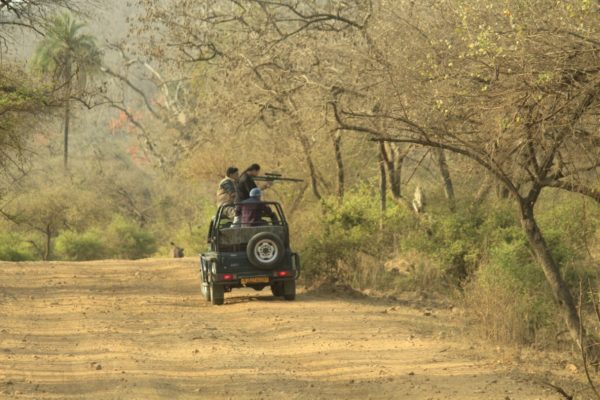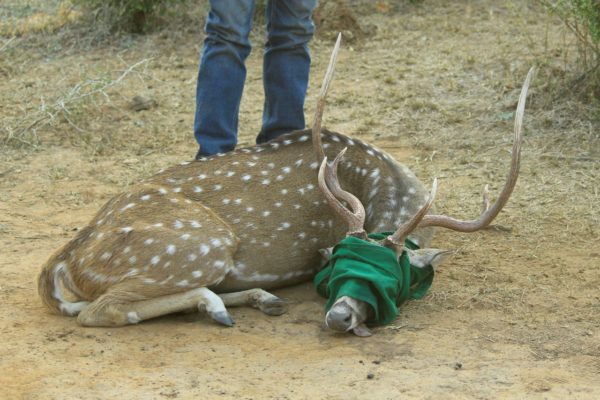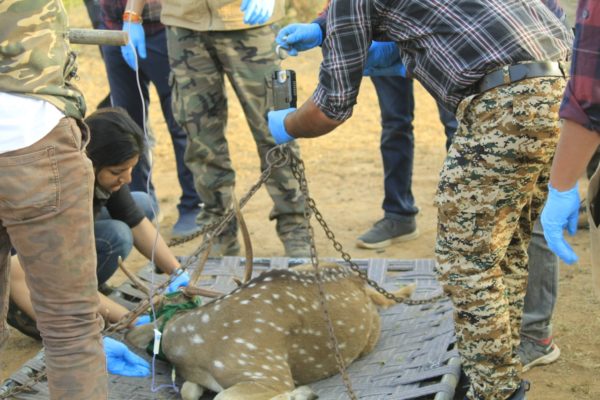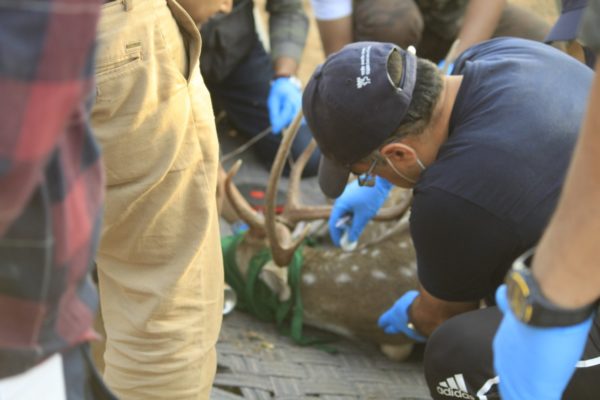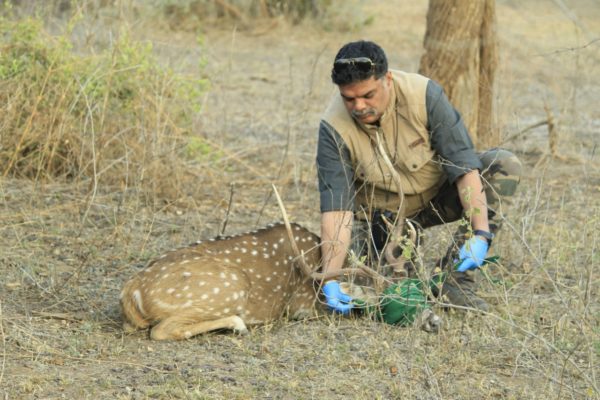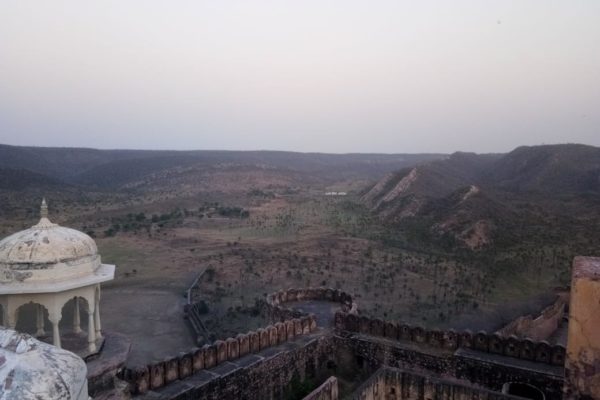
9th April
by Dr Mayur Kumar
The 12th day of the training. All through our course we had learnt about different taxa, different species within each taxa and their similarities and differences. The differences are inter-specific and intra-specific. We had all gained a lot from the immobilization experiences of the Sambar the previous day and today we were all set to learn the nuances of working with another species.
Our day started with Dr Parag Nigam assigning groups and responsibility to each. The responsibility included darting, searching and blindfolding, weighing, sampling, monitoring and documentation. After a quick warm tea at 5:30 am, the jeeps with the teams drove into the Sariska Tiger on the routes looking for the ideal herds of Chital. The darting team spotted an ideal location with an ideal herd and zeroed in on a Chital (Axis axis) to be darted. With a little effort and manoeuvring the animal was darted and he went down smoothly and rested on his sternum. The animal was carefully approached and blindfolded and positioned for the teams to begin their work. The immobilized animal was monitored for vital signs (heartrate and pulse, respiration rate and quality, temperature, colour of mucous membrane etc). Biological samples and morphometrics were collected and appropriately recorded. The animal was weighed previously and then moved off the stretcher. This was a healthy male Chital in his prime.
On completion of the work assigned to the teams, the animal was appropriately positioned, and the teams got back into the vehicles. The dart site and the phlebotomy site were dressed with an antiseptic spray and the animal was sprayed with water to prevent overheating. It was a warm day with temperatures reaching the 40’s, thus this precaution was essential.
The reversal was given intra-muscular and the animal revived and walked away, gaining strength with every step.
One done, the last one to go…. Teams were shuffled and the next site was located. The next animal was darted in the blink of an eye and went down smoothly. The teams rushed down the slope to blind-fold and position and then the other teams came in to complete their assigned tasks. Monitoring, weighing, and sample collection were seamlessly executed and the animal was efficiently revived. The teams gathered at a distance (mimicking a large black blob ..akin to a rock formation) and watched the administration of the reversal drug, the revival of the animal and we waited till the animal walked off and was out of sight.
We then drove off to Slopka for breakfast followed by a walk with Gokul to identify and reacquaint ourselves with the common floral species in that habitat. Finally, we returned to the Sariska Palace. Around 5 p.m. we went to the Kankwari fort. There has always been a debate about protected forest areas being inviolate spaces for the animals and the people who have lived in and around these areas. The drive to the fort and the birds-eye view from the fort provided real-time insight into what interface areas really indicate, the challenges of management of the wildlife habitats and interface areas and people, and the concept of Onehealth. We got a small measure of Mughal History as well.

